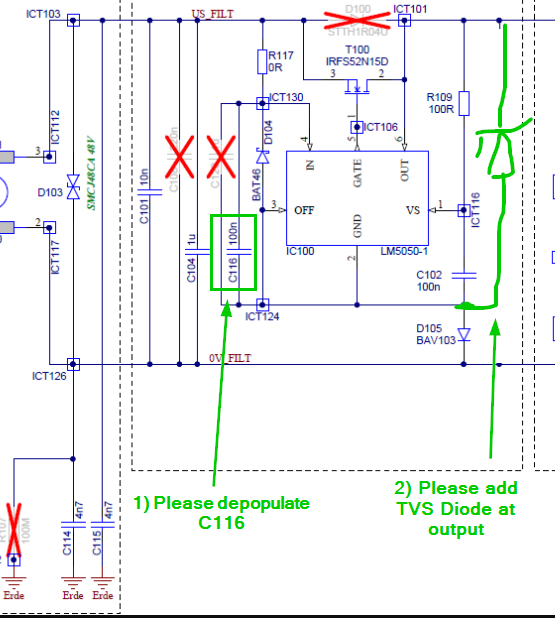Hi all
We use the LM5050-1 as an ideal diode in the input circuit of a power supply, mainly to reduce power losses compared to a normal diode.
Schematic:
During production test, around 10% of the devices fail during reverse polarity test (power supply ramps up to -50.4V with 1R series resistance).
Failure modes:
1. No visible defect: change of LM5050 resolves the problem
2. LM5050 Pin Nr. 6 burnt: change of LM5050 resolves the problem
3. R117, D104 and D105 burnt, LM5050 and C116 discolored laquer
Compared to the recommended application for reverse input voltage protection, I see the following differences:
C116 not used
D105 Schottky instead of a normal diode
D104 Schottky with lower forward voltage / higher current rating
I've done many tests with one example and was not able to destroy it, does anyone see some weak spots which could lead in the described failures?
Thanks in advance
Martin



